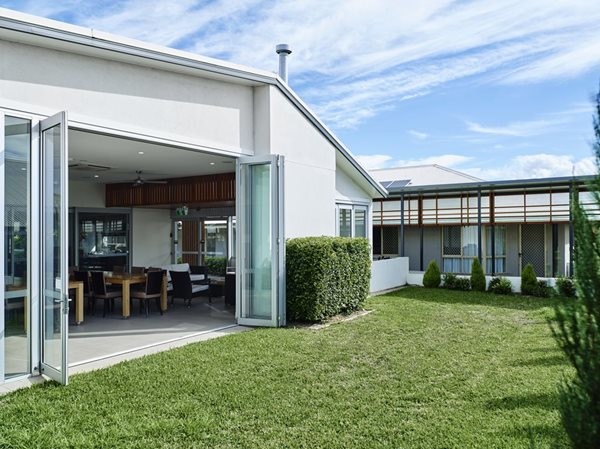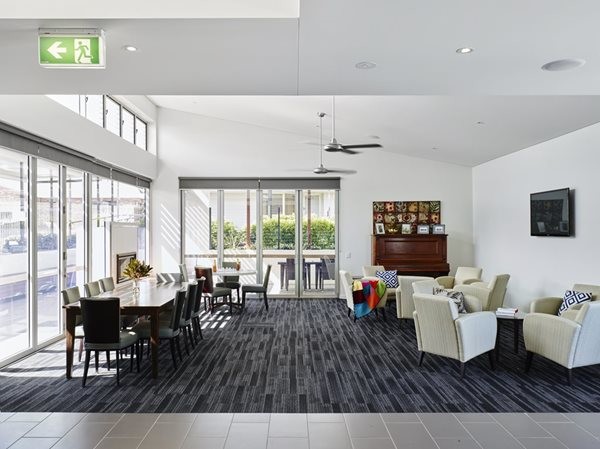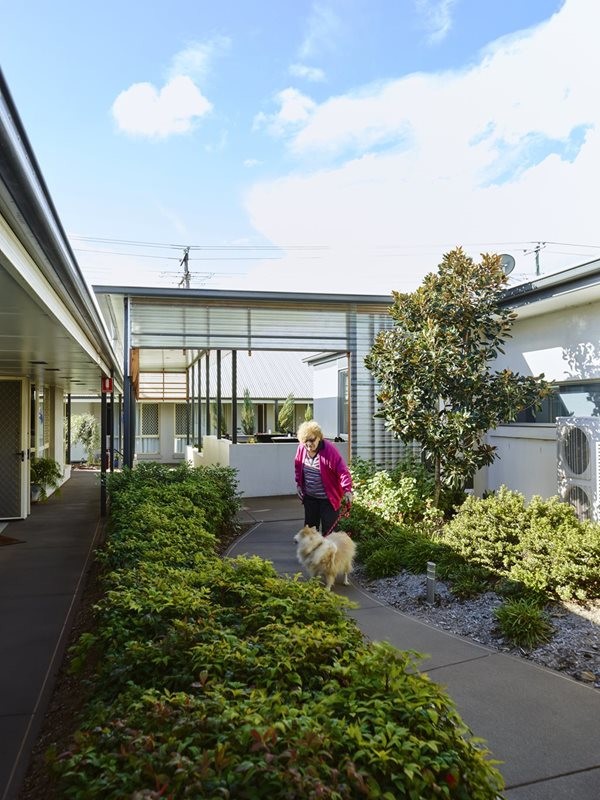The word ‘institution’ conjures up many associations in aged care — most of them negative. However, institutions such as universities, student housing and science research organisations have many things in common with the aged care sector, and share similar challenges. Although they are usually run like businesses, it is the human values and a research-led design approach that drive much of their activity.
A research-led design approach explores how the end user – the student or resident in this case – will use the space, and how the space will influence how they feel and behave. It is an essential and ongoing part of the design process that puts the user at the centre of the design right from the start.
Many aged care providers are now applying the lessons from these institutions to their own facilities to provide a better standard of care and increase operational efficiencies. There are several key elements of the research-led design approach that can have significant positive impacts on an aged care development, including designing a quality residential experience, embedding seamless technology, designing for a strong community and integrating landscape into the design.
Designing a quality residential experience

Baby boomers will not tolerate residential care environments that mirror hospitals rather than homes. They are looking for aged care to support them to live as normal a life as possible. Coupled with tailored care, the built environment is key to maintaining a sense of independence, identity and community in what will increasingly become large-scale entities for care provision.
Designing a residential rather than institutional experience creates environments that are warm and appealing to live in. For the residents and their families, it relieves one of the larger stress points of moving from the family home into a care environment.
University student housing projects can provide insight into how to design quality, flexible housing that is cost effective and appealing. The refurbishment of the Freedom Aged Care village in Toowoomba puts residents at the centre of the design in the same way successful university accommodation projects do. It’s about liveability – about tailoring the facilities to the occupants first so the perception is of home, where care is a seamless and welcome backdrop rather than the dominant experience.
Design principles for higher-end residential architecture can also be applied to aged care facilities to enhance the interiors. A focus on generous and tailored space, sequence of experience, attention to detail and timeless, quality materials are very important. The fit-out needs to be hard wearing and practical for maintenance purposes – material advances allow a luxury, domestic tactility while eschewing the utilitarian look and feel commonplace in care environments. A lounge room needs to look and feel as comfortable as a normal lounge room and be a pleasure to be in. The residential feel is paramount to the success of the Toowoomba project. Nothing about the environment says ‘nursing home’ - it feels like an independent living environment for a demographic a decade or more younger, not a higher care facility.
RELATED
We are not foolproof: designing to assist with accessibility
Design for life. AKA design for all
Putting technology in its place

Just as Wi-Fi and learning technologies are ubiquitous in universities, health care technology pervades all aspects of aged care. Technology should be an enabler, not a driver of design. This approach allows round the clock care to be embedded, unseen, in a friendly and calm environment, and couples are able to stay together in their own homes as their care needs increase. Nursing staff are able to unobtrusively monitor each of the residents depending on their care needs.
The technology must support the greater care objectives of the built environment; it’s not about the technology itself. Taking the focus away from the high care equipment and processes is an essential part of designing for the baby boomer generation who want to focus on their lifestyle and not their health issues. Different levels of care must be supported seamlessly. There needs to be flexibility to switch between modes as the need arises. That increases efficiency for the provider, and makes things easier for carers and staff, and the residents feel more at home.
Flexibility and adaptability for future technology also needs to be accommodated. The latest university and science-based research laboratories are designed to adapt to technologies that don’t exist yet – forward-thinking at the design stage can add years to the life of a project.
Building a strong community feel

The latest research into the education market shows that students value a sense of community and a feeling of belonging more than almost anything else when choosing a school or university. Residents in aged care also highly value a sense of community and research has shown that it has a strong influence on quality of life and health outcomes. The problem is, many education and aged care facilities are housed in buildings that don’t support interaction and community building. Many universities are dealing with the issue by re-designing their existing campuses into community-focused accommodation and teaching environments.
Aged care villages such as Freedom at Toowoomba are also harnessing these benefits. The original communal dining hall has been re-designed and extended to focus on building community, encouraging interaction and fostering relationships between residents. It is also deliberately designed to feel welcoming for family and friends.
One of the most popular spaces in the Freedom village is the activity area that has become a favourite meeting point for residents with its clear view of the all comings and goings of the village and broader neighbourhood. This loose-fit and adaptable space has been appropriated beyond the initial design considerations to be a key and permanently occupied hub. Although all the apartments have kitchens, most residents prefer the camaraderie of the dining or activity rooms, or to meet friends at the bar and café. These areas are the heart of the space and integral to building a strong residential community feel where people feel truly at home.
Taking landscape one step further

The benefits of therapeutic gardens in aged care are well known and they have been in use for some time. In this case, landscape is taken a step further with rigorous principles applied to all aspects of landscape throughout the village. By taking the integration of landscape beyond what’s usually expected you see the benefits spread. Incorporating fish ponds, kitchen gardens, chook pens, aviaries and safe sensory landscapes can evoke memory and aid in wayfinding.
Gardens bring real joy to residents, and it regulates the environment, keeps the air clean and provides opportunities for residents to meet with family and friends beyond their own living space. It is a very cost effective response to the clinical nature of the traditional aged care environment, and a strategy often seen in health care, labs and schools. Beyond this, the opportunity to provide ownership over available private landscape and communal landscape pockets allows willing residents to garden themselves or cooperate with others in managing the landscape. Residents take obvious pride in the outcomes whilst enhancing the sense of community and building friendships - with all the therapeutic benefits these entail.
Designing for the longevity revolution
The Australian aged care sector is just starting to address what the World Health Organisation describes as a ‘longevity revolution’. With such an extended number of years in retirement, the focus on supporting retirees to live a good life requires a more holistic approach to supporting them to remain healthy, mentally active, socially engaged and productive contributors to their community.
Aged care villages that are designed to view residents as valued members of their community, and that respond to the lifestyle-focused needs of the baby boomer generation will increase in popularity and become the norm in the coming years. Research-led design for institutions is a practical approach to aged care design that can add value in this increasingly challenging environment.
Developers and operators looking to capitalise on this change in the market need to look first at how the design of their built environment can provide what the market wants.
Photography by Toby Scott.

